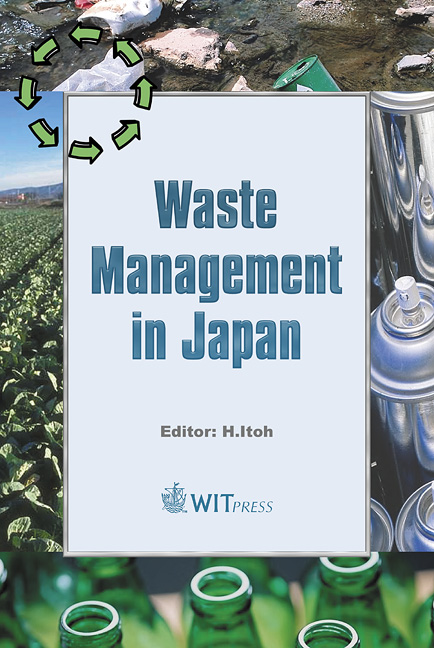Analysis Of The Effect Of The Containers And Packaging Recycling Law On The Waste Management Practice In Nagoya City
Price
Free (open access)
Transaction
Volume
79
Pages
9
Published
2004
Size
349 kb
Paper DOI
10.2495/WMJ040181
Copyright
WIT Press
Author(s)
T. Okayama & M. Yagishita
Abstract
Analysis of the effect of the Containers and Packaging Recycling Law on the waste management practice in Nagoya city T. Okayama & M. Yagishita Graduate School of Environmental Studies, Nagoya University, Japan Abstract Japan legislated the Containers and Packaging Recycling Law in 1995; the law was put into effect gradually and became effective totally in 2000. In this law, each municipality can choose how many items they collect for recycling, so that not all the municipalities in Japan collect all containers and packaging still now. In particular, big cities whose populations are more than 1 million can not collect all items, because the cost for recycling all items is too much and they do not have appropriate recycling routes. This study examines the effect on the reduction of the amount of waste and on the environmental effects by the method of Material Flow Analysis and Life Cycle Assessment, through Nagoya city practices. Nagoya city has a population of more than 2 million. In the city, the law has been in force since 2000. Nagoya city is only one big city that collects all items of containers and packaging in Japan. So it is important to study Nagoya practice to evaluate the success of the law. Accordingly, the surveys of material flow and discharge amount of CO2 and NOx were made in the years 1998 and 2001, then each year’s data was compared. By the study, it is observed that the amount of municipal waste discharge reduced by more than 266,000 ton and the amount of landfill reduced to almost half after enforcement of the law. On the other hand, the amount of collected containers and packaging gained 63,002 ton, and it multiplied about 3 times. Considering the environmental impact from the waste management system of Nagoya city including containers and packaging recycling, the amount of total discharge of CO2 and NOx reduced by more than 34%. Therefore, the effects on the environment obviously improved. The law has accelerated the separating of containers and packaging from the waste going to landfill, and it not only has reduced the amount of waste but also has changed the contents of waste going for incinerating, causing more reduction of landfill. As a result, it clearly shows that the recycling based on the law has succeeded in reducing both the amount of waste going to landfill sites and the environmental effects. Keywords: the Containers and Packaging Recycling Law, material flow analysis, life cycle assessment.
Keywords
the Containers and Packaging Recycling Law, material flow analysis, life cycle assessment.




